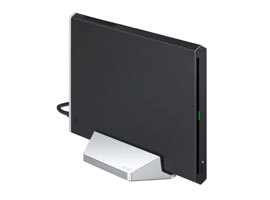For a while now, I have been adopting new, cleaner way of organizing my files in folders. Instead of having, for example, Documents/School/JC and Documents/School/University, I put them as Documents/School - JC and Documents/School - University. This is to reduce going deep down a hierarchy. Instead, I can just go down one hierarchy and find everything there, lists after the "-". I limit the "-" to two maximum, though, otherwise the window will be full of list. I have folders of Pictures, Musics, Videos, Documents (for work or school), Installers and Files (for any other files). Then inside there I will use the "-" naming system. In my Documents, I have something like "Documents/Computing - Blackberry Theme", "Documents/Computing - XNA Game", "Documents/School - JC", and so on.
Though this is easier for me to navigate, there is still one problem with the folder system. What if a file can be classified into more than one folder? Do I need to have two copies of the file? Or should I merge the folders? Well, I thought of another alternative to the folder system: tagging system. It works similarly like Gmail tagging system. A file (email in Gmail) can be tagged with two tags, and the tags themselves can have hierarchy.
How does this work better than the folder system?
Firstly, a file that would fall into more than one category need not have copies thus consume less memory.
Secondly, faster search. The arrangement of files can be done by type of files/extensions, followed by name. Since there are no folders, all files are just in one big area thus searching should be able to be faster (since the search engine need not to explore into each folder). All this despite you can still using the navigation of folder system, just by exploring the tag hierarchy.
What are the possible downfall of the system?
Firstly, the User Interface (UI) change needs time for adaptation. The UI itself is not designed yet, such as what would you see after double-clicking File Explorer? The whole pool of files? Then, how do you add tags? Right clicking? It seems easier to Ctrl-C/Ctrl-X and Ctrl-V or even dragging files.
Secondly, programmers would have a headache since modular programming has been using folder system forever, and using tag system would destroy ALL programming syntaxes of using more than one file in different directories. If all application is put into one pool, application files of same name would be replaced thus one program will work at the price of another.
Solutions?
I can't think of any solution for the UI. For the programming part, possibly the tagging system is only deployed on personal files, i.e. the pool of files are divided into files added by user and files used by programs. This allows tagging system to work better with less interruption to programmers' lives. However, this again creates another problem. What about those people who like to mess around with the system (hackers) or developers? This is another headache. If the access to program files is removed so that people cannot mess around with the program files, then PC will just become like Mac OS X - dumb-proof.
Probably Chrome OS could try this system. Why? Google is an internet giant. It uses tagging system in many of its product, thus its familiarity with the deployment. Another reason would be that Chrome OS user is very limited that implementing tagging system would not disrupt majority of business as compared to implementation in Windows. If it could win the heart of users, then Google would reap the profits. Otherwise, dump the whole idea. Why not Linux? Because Linux is for those who like to mess around with system files, and as of above, this tagging system would not really work for those people.


